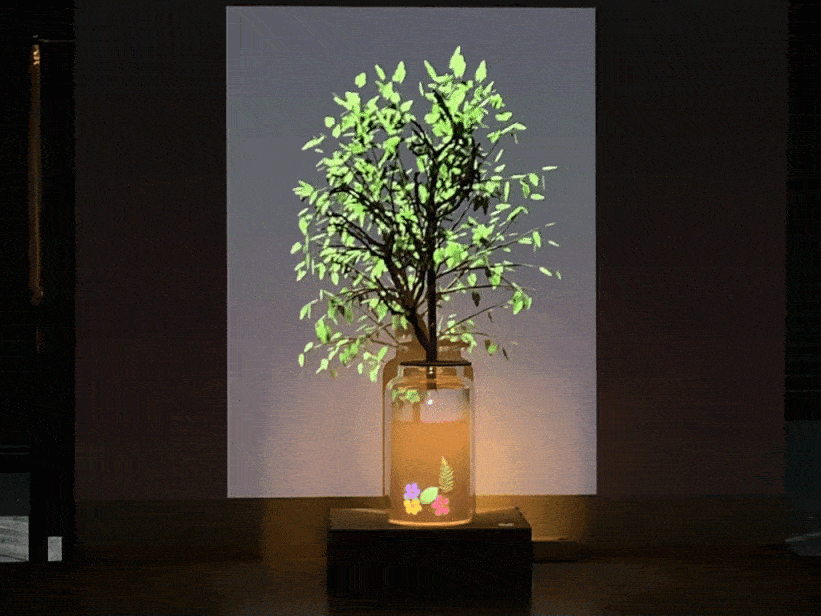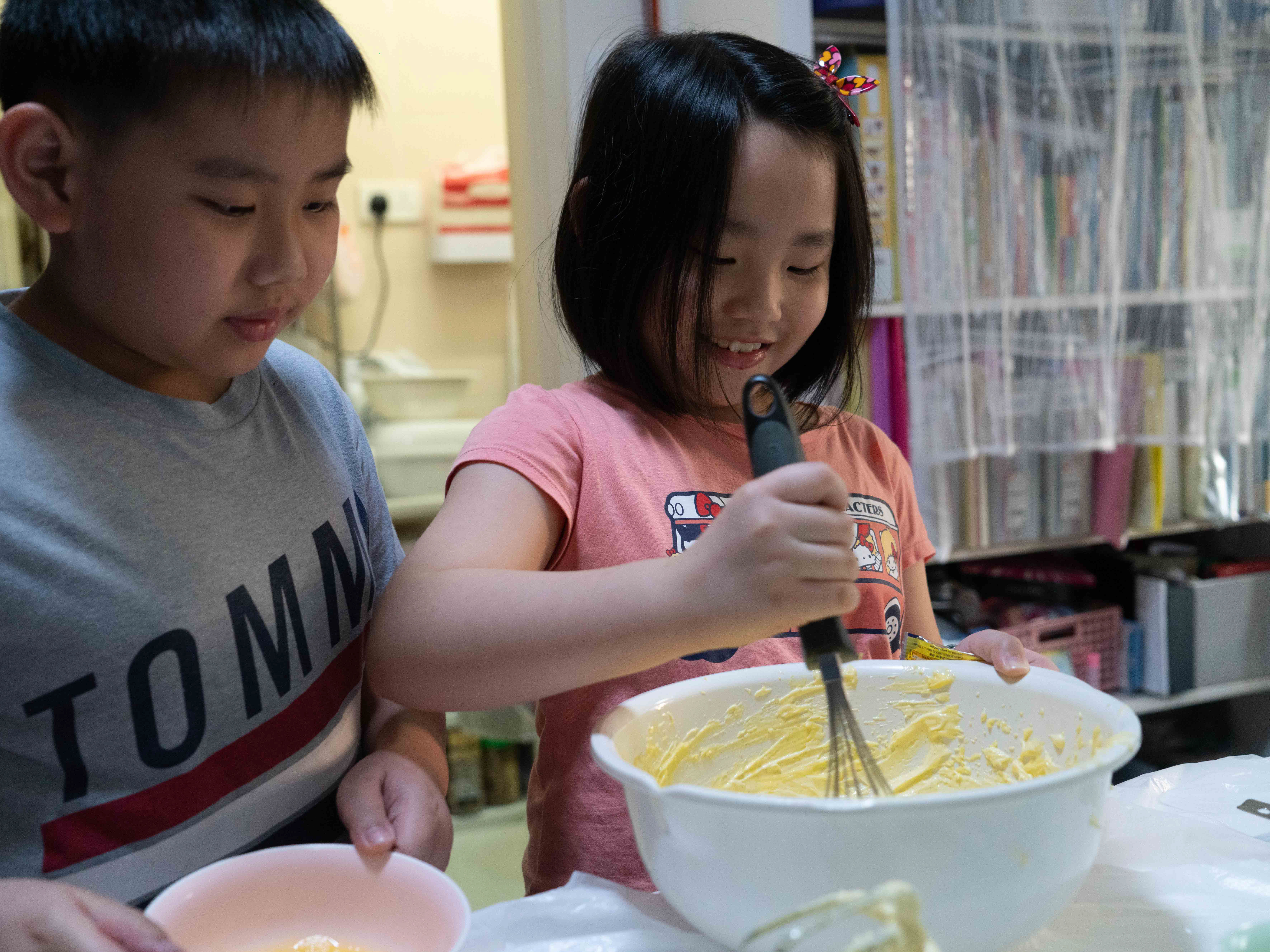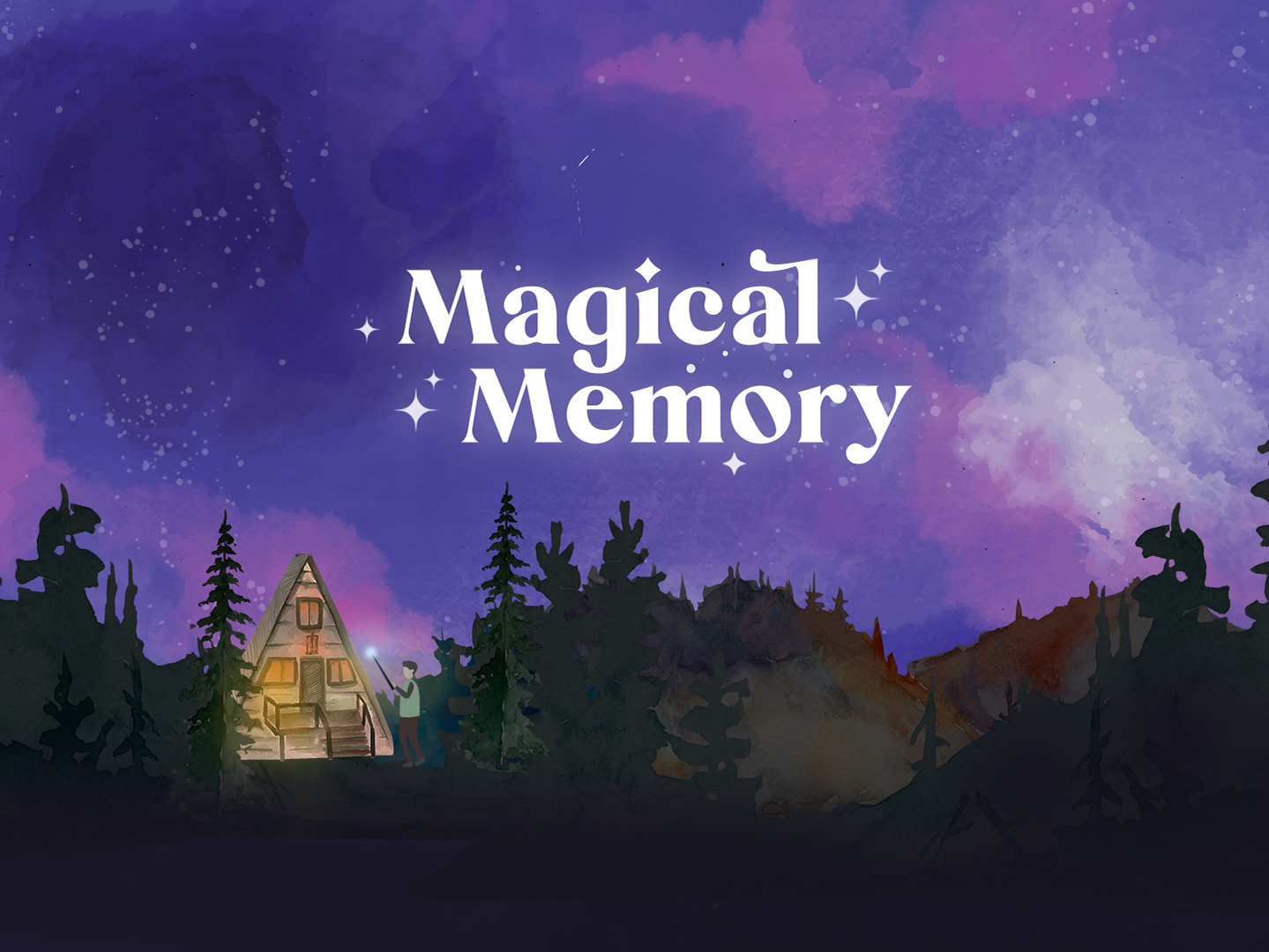Vintage "Luxury"
Consumerism has become a prominent part of the social culture. People identify strongly with products they consume out of stimulated desires, especially those with commercial brand names.
The interactive Vintage' Luxury' exhibition aims to provide a reflective experience that makes people pay attention to the intrinsic value of products rather than pursue the material value and reflect on their consumption concepts by emphasizing stories, memories, and emotions behind the objects.
Team Project | 2020.09-11
#ReflectiveDesign #Experience #DesignResearch #Prototyping
Design Proposal
Background and Problem Statement
Consumerism has become a prominent part of the social culture. People identify strongly with products they consume out of stimulated desires, especially those with commercial brand names. Companies and influencers also utilize this phenomenon and people’s consumption philosophy to carry out overwhelming advertising and social media promotion, combining high consumption with an enjoyable individual life
Resolution and Vision
Our final deliverable - The Vintage' Luxury' exhibition aims to provide a reflective experience that makes people pay attention to the intrinsic value of products rather than pursue the material value and reflect on their consumption concepts by emphasizing stories, memories, and emotions behind the objects.
Our design vision also includes using these emotional attributes of exhibits and personal informatics as a trigger point to encourage the audience to actively increase their interaction with belongings in their daily lives and increase the intrinsic value of the objects.
Background Research
Emotional Design and Consumption
Most of our behaviors are enriched with and influenced by emotions. Consumption is certainly the case. A product, or using a product, can elicit disappointment, attraction, shame, pride, disgust, contempt, admiration, satisfaction, fear, anger, and any other emotion a person may also experience in response to events, people, or actions of people. (Pieter M.A. Desmet, 2000)
Relevant literature has also suggested that designing emotionally durable objects can reduce consumption and premature discarding habits. One of the reasons behind this is that people tend to acquire meanings rather than objects from consumption in the developed world. Therefore, designing products that have sustainable and reflective meaning beyond visceral and behavioral levels ( Norman,2004) has been put forward in the context of consumerism development. (Chapman,2005)
Consumption Experience
Consumption is not a mere act of buying or using things. It is also not the end of the central economic cycle, but an act of production of experiences and selves or self-images. (Firat and Dholakia, 1998) The enjoyment derived from shopping does not come from itself. Shopping is a socio-economic means to socialize, enjoy oneself, and the company of another person while making purchases.
Consumption experience is thus spread over a period of time and can be divided into four major stages (Arnould et al., 2002):
• The pre-consumption experience, which involves searching for, planning, daydreaming about, foreseeing, or imagining the experience;
• The purchase experience, which derives from choice, payment, packaging, the encounter with the service;
• The core consumption experience, including the sensation, the satiety, the satisfaction/dissatisfaction, the irritation/flow, the transformation;
• The remembered consumption experience and the nostalgia experience activates photographs to relive a past experience, which is based on accounts of stories and on arguments with friends about the past, and which moves towards the classification of memories.
Cultural Probes
Objectives
Through the cultural probes, we want to acquire inspirations of the project direction from unexpected stories and feedback. We diverged things we want to explore and then converged into four main aspects:
1. What: What kinds of products our participants have mainly bought and what they want to or dream of buying in the future.
2. Why: The reasons and motivations behind the consumption are essential. Thus we designed questions about this aspect in addition to consumption behaviors.
3. Emotion: Different consumption experience stages have different emotions. We want to explore the emotional changes related to consumption and understand how long the pleasure of consumption can last.
4. Value: To understand and acquire inspiration from participants’ value systems and consumption concepts, we generated some reflective, imaginative, and even absurd questions that also enhance playfulness.
Participants
Six participants were recruited to take part in the cultural probes stage. They are all young people in their 20s and 30s working in big cities, and they are the main force of consumption. All participants were asked to conduct the 10-day research and participated in the post-research interviews after finishing the cultural probes.
Deliverable
The pack of cultural probes sent to each participant contains five materials: a set of postcards, a diary book, a countdown calendar, a things box, and an instruction paper that briefly introduces each probe and how to use them. The description and findings of each probe will be explained as follows.
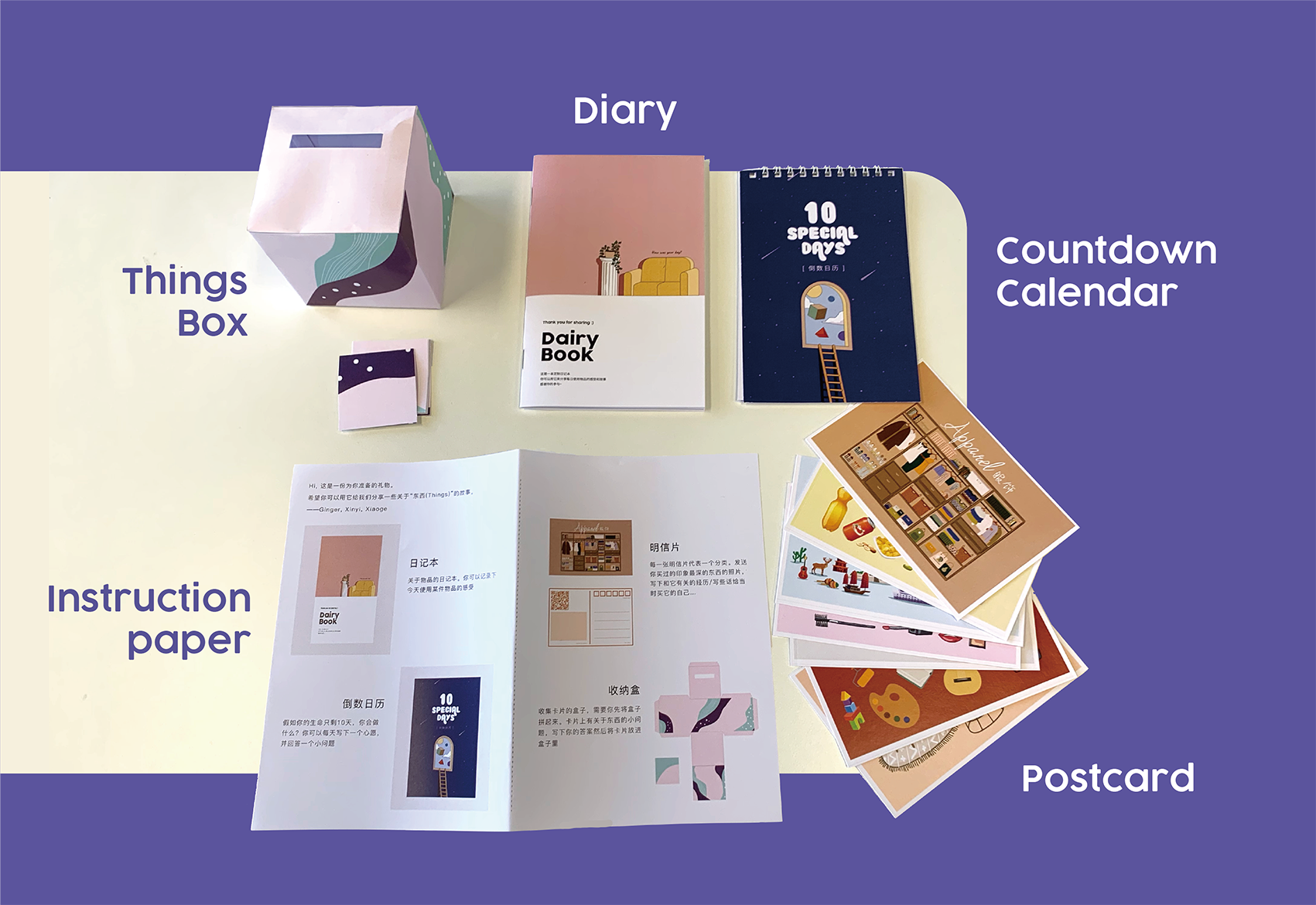
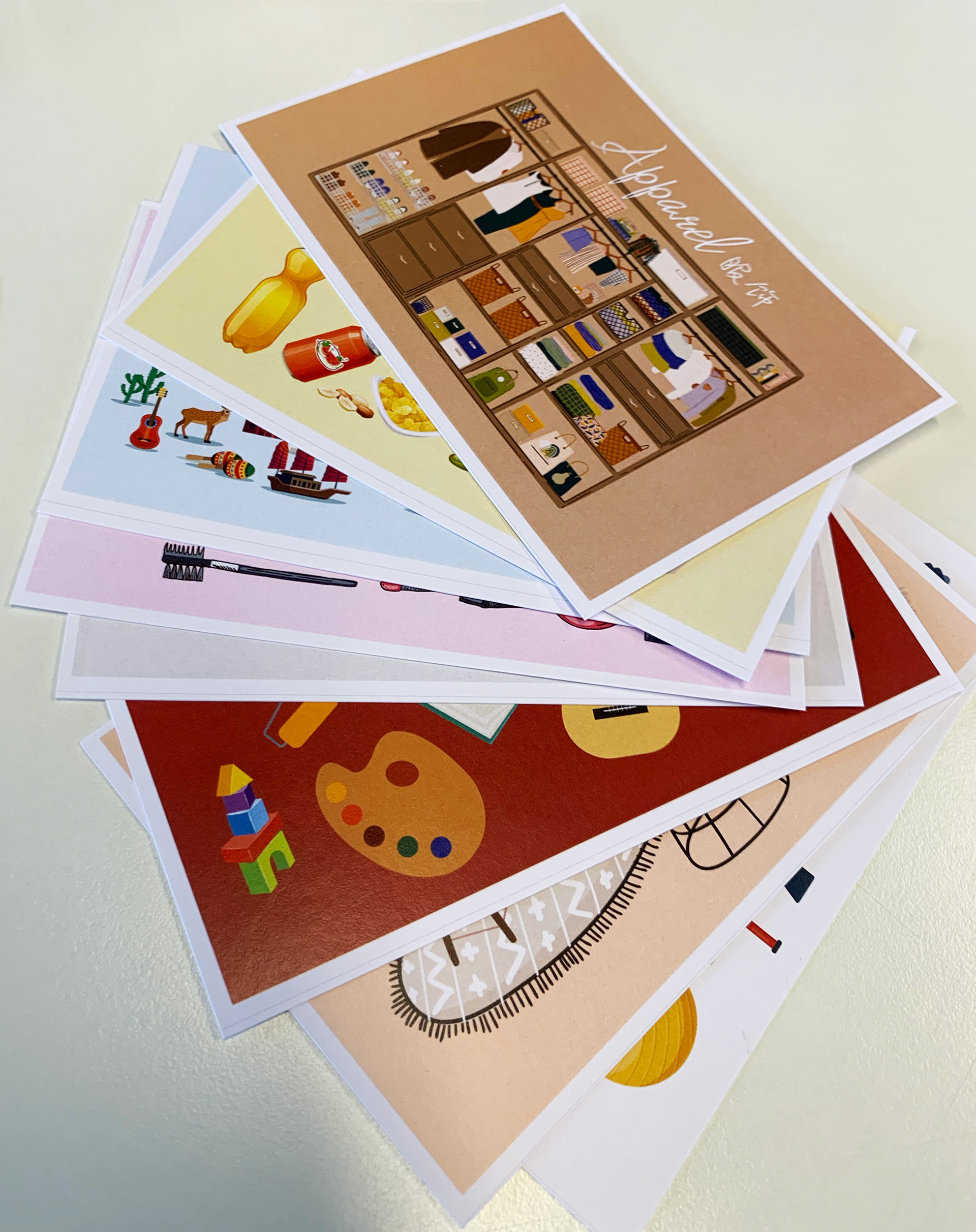
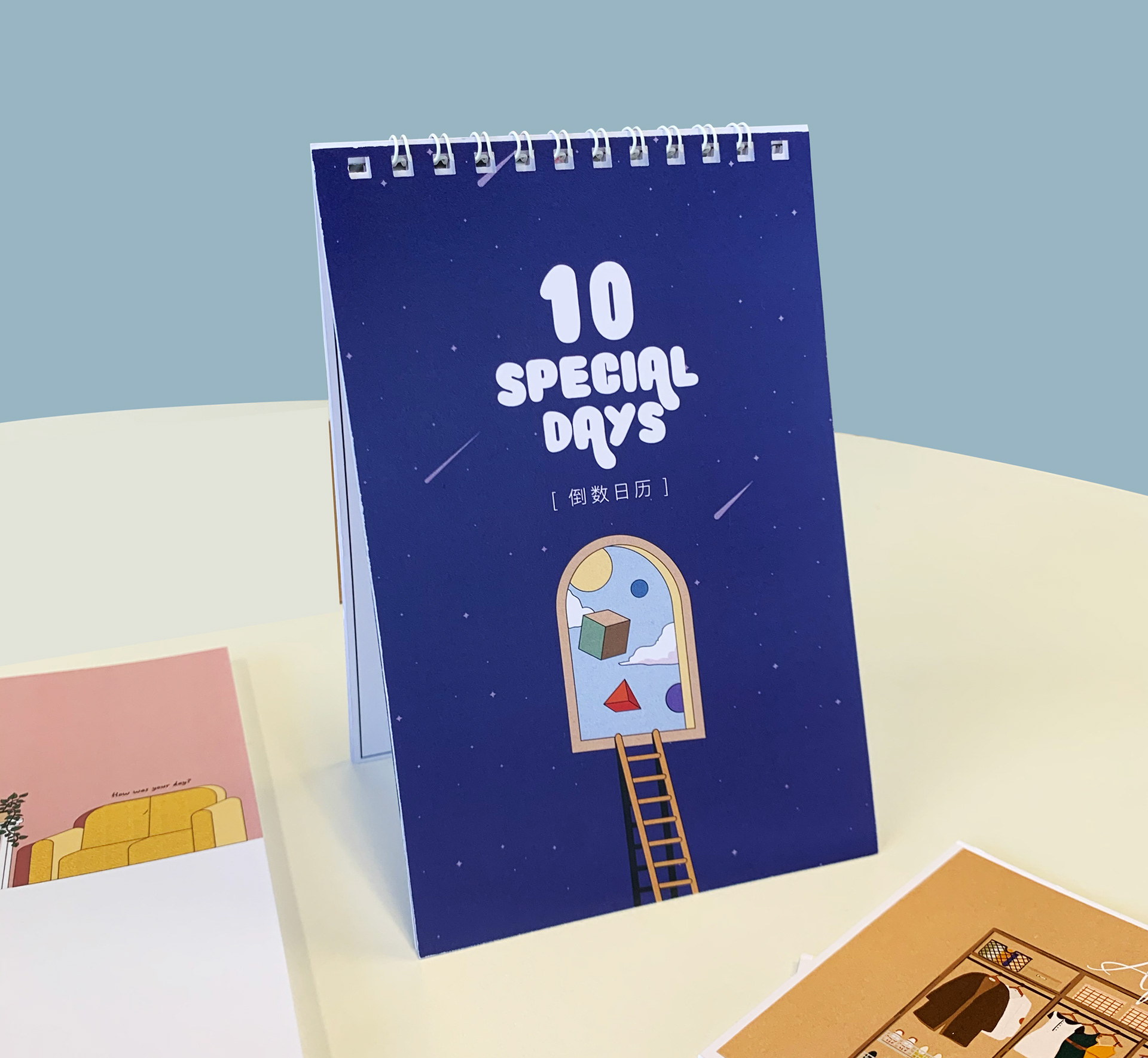
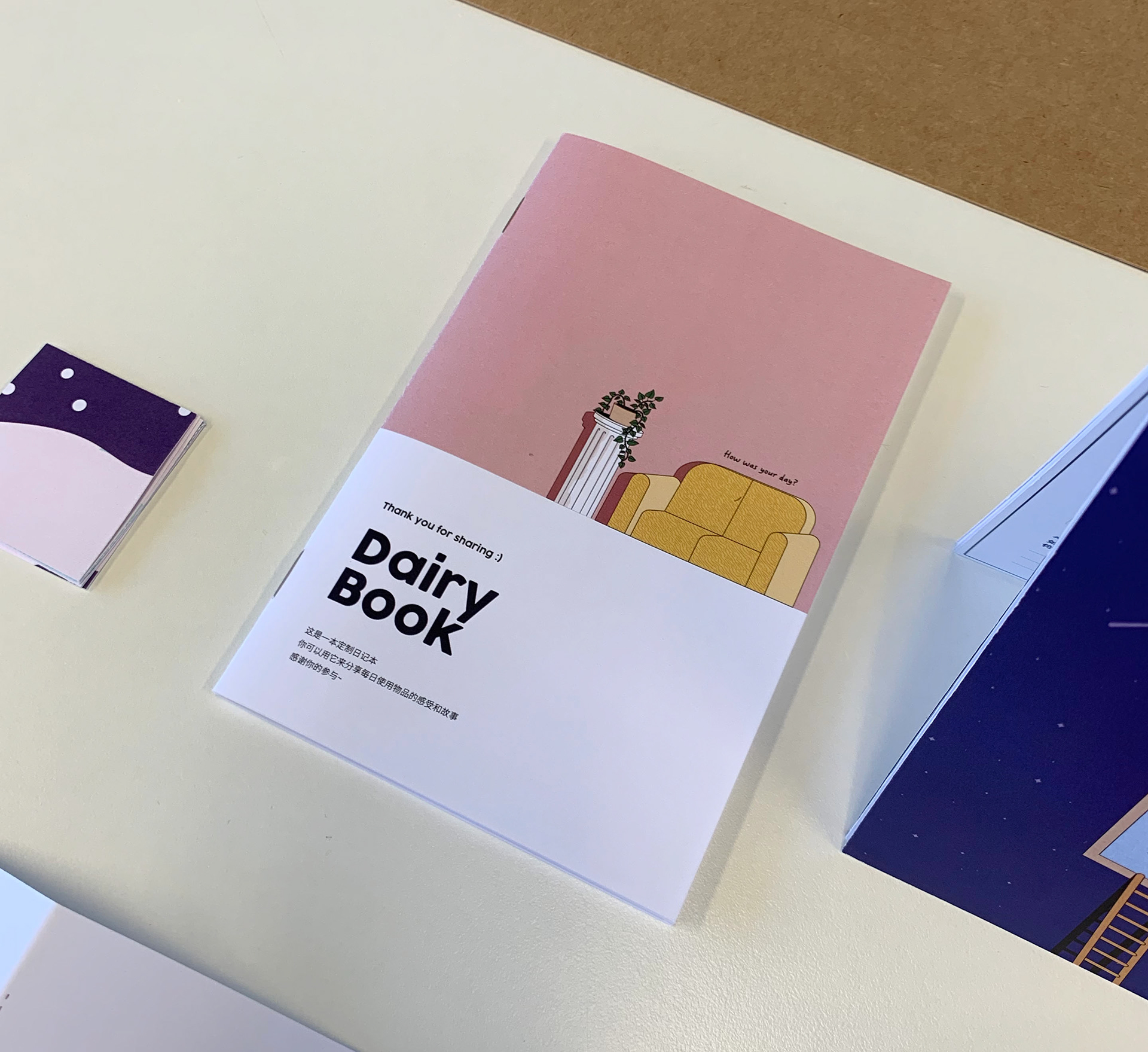
1. Postcard
The set of postcards intends to explore participants’ memories and stories of consumer goods. Each postcard represents a category of items, such as apparel, furniture, cosmetics, food, travel, etc. Participants can write down the most impressive and memorable products they bought and their stories on each postcard. They can also upload pictures of the products via the QR code on each postcard.
Findings: The Remembered & Nostalgia stage is a core stage of the consumption experience. People will give items further value and meaning beyond the external characteristics or economic value.
The postcards and participants' feedback
2. Diary
The diary book is for participants to record their feelings about things they have used each day, sketch what the objects look like, and write down the purchase information. This probe intends to understand participants’ daily interactions with their consumer goods.
Findings: Participants reflected on the relationships between them and their objects in the records of usage experience, and gave their belongings some anthropomorphic characteristics.
The diary book and participants' feedback
3. Countdown Calendar
A calendar with a special context ‘if you only have 10 days to live’, with which we want to explore participants’ consumption concepts and value systems. Participants need to write down things to do and answer an imaginative question on each day, for example: “If you have unlimited wealth, what would you buy?”, “What objects would you describe yourself with?”, etc.
Findings: People want to experience both physical and mental worlds, leave a trace / be remembered, and have a sense of belonging. What people think is valuable to them has nothing to do with consumption.
The countdown calendar and participants' feedback
4. Things Box
The Things Box concludes a box and a set of small cards. Each small card has a question about feelings towards objects, for example: “What objects make you feel safe?”, “What things make yourself unique?”, etc. Participants need to write their answers and put cards in the box.
Findings: The deeper value of some items will not be shown at the time of purchase. Some products’ deep characteristics and emotional transmission are slowly formed in continuous interaction.
The "things" box and participants' feedback
Main Inspiration
Consumer goods have extrinsic and intrinsic values for people; the extrinsic value depends on the attitude of others, and the intrinsic value depends on the emotions that are slowly accumulated in the interaction with the object. Moreover, people’s emotions about consumer goods will change as time flows. Sometimes people will create their own space through consumption to escape from reality and pursue the illusion.
Participatory Design
Workshop Overview
Based on the insights that we find in the probes and the interview, we narrow down the research direction to the reflective design that could enhance people's notion of the objects’ intrinsic values. The goal of the participatory workshop is to acquire insightful guidance on the refined topic direction through letting participants create design ideas related to evoking product emotions before and after consumption.
PD Workshop Flow
Activities and Insights
1. Pre-task Preparation
All participants were required to get prepared around two small tasks before the workshop. First, they were asked to provide a photo of the most valuable object they owned, which would become the lots in the auction section. Second, a shopping list with at least 3 different types of objects was required as the main character for the storytelling and performance part.
2. Auction
Goals: The auction can be a hook for the host to introduce the research background, intention, and current direction to participants. During the auction activity, the participants will share their own definition of ‘the most Valuable Thing’ and see how much it is worth from others' perspectives.
How it works: We received the photos from participants, which will be shown on the screen as auction items. Before the bidding, the seller(owner) will narrate the reason for buying and the stories behind it. The competition will then start and every participant can raise the card to bid on the object until it is sold. In the end, participants will discuss the auction result around whether they are satisfied with the hammer price, the bidding reason, and their thoughts of this activity.
Participants' most valuable items and the bidding result
In this section, participants showed different attitudes towards the definition of 'the most valuable thing.' For some people, the most valuable thing could be the most functional tools that can improve efficiency. The object which connects people with their precious things is also considered the most valuable thing. The litter box for the cat represents the owner's caring for the pet. The history of the object could also be the reason for its valuable meaning. The teddy bear given by a family member is non-replaced, unique, and full of intimated emotions.
3. Storytelling
Goals: The primary objective of the storytelling section is to explore emotional stories that could happen between participants and their consumer goods to have a deeper understanding of the relationship between consumers and products. We set the criteria of the story in advance, including roles, the personification of objects, dialogues, and emotions after two rounds of pilot tests.
How it works: The storytelling section mainly has four procedures. First, four participants were divided into two groups (2 people in each group). Then we introduced our intention for this section, our expected criteria of the stories, and the form of performance.
The storytelling section flow
Second, each participant was asked to write down three to five things they want to buy, which they can actually afford. Then we collected their shopping list and selected one item for each group to develop their stories.
Third, each group developed a story around one item. Participants drew their story structure and dialogue lines on the whiteboard, and then each group shared their story in a roleplay way, one person should play the user, and the other person should play the object.
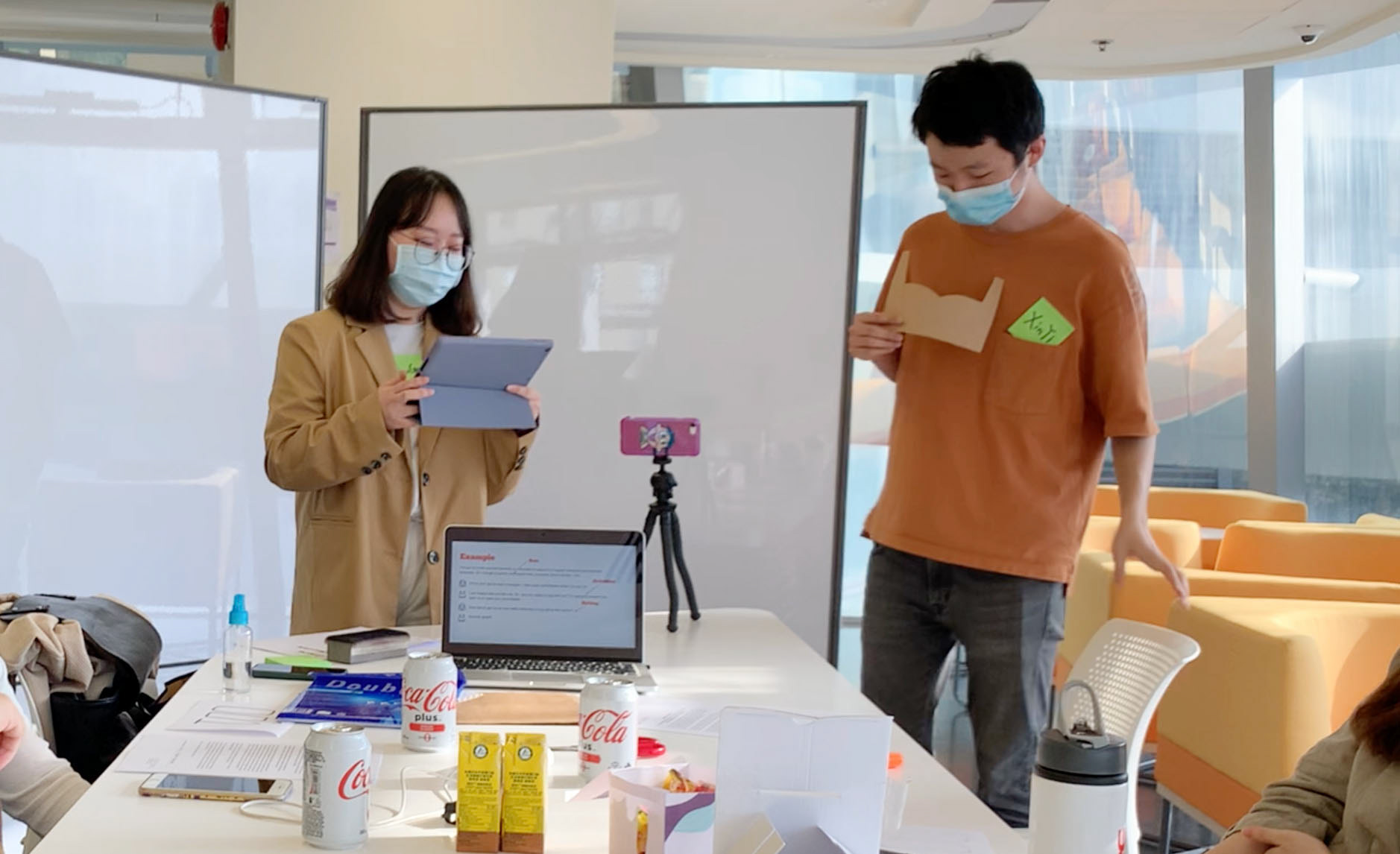
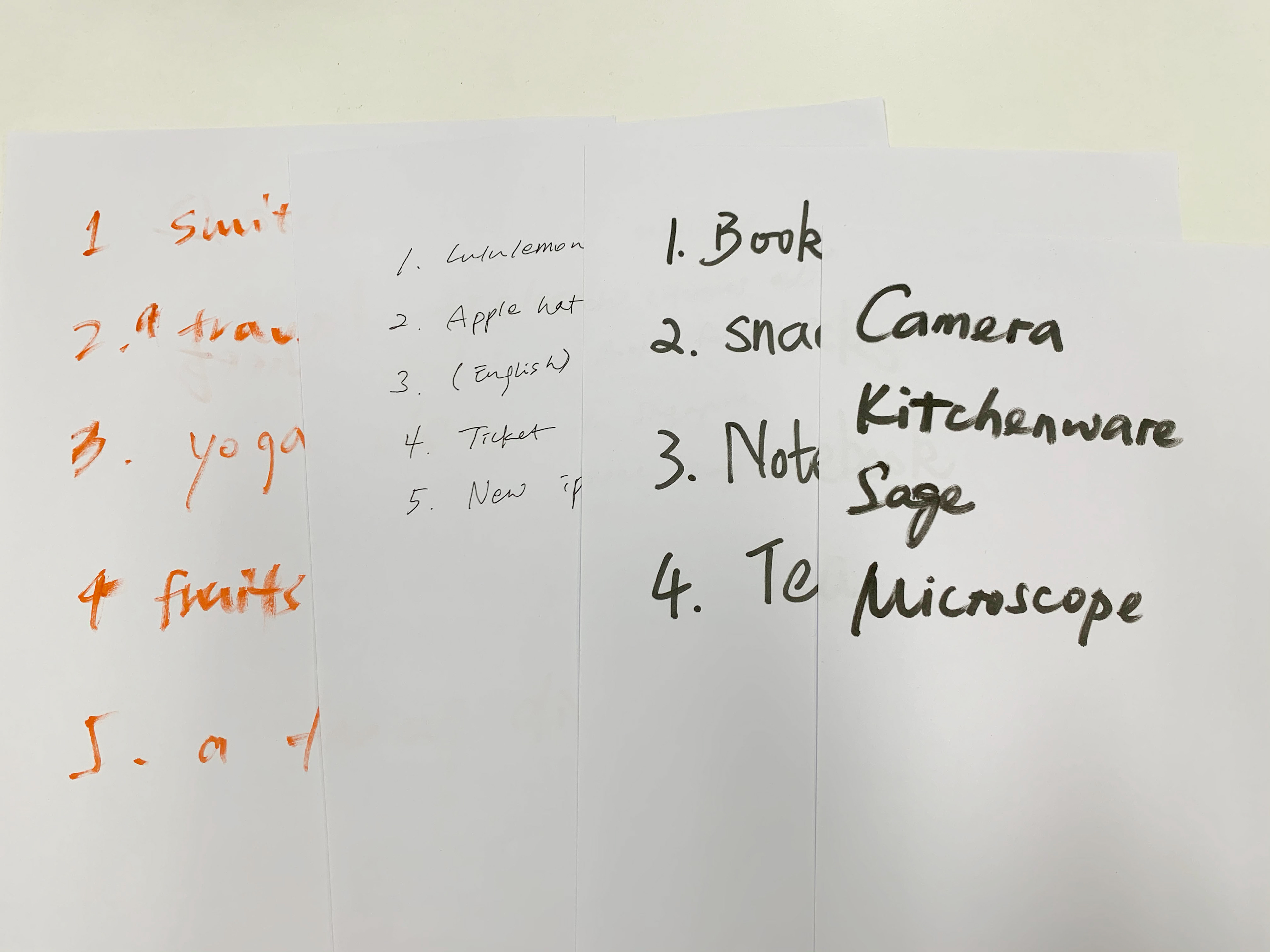
The roleplay sample acted by hosts and participants’ shopping lists
Both stories expressed emotional changes in different consumption stages: pre-consumption, the try-on, purchase, the post-consumption usage experience, which is relatively aligned with our literature-review findings and insights from probes(user's emotion journey).
In the story of leggings, the leggings and their buyer continuously have positive emotions, and their conversation became more and more intimate. However, as for the story of the oven, the user experienced a frustrating time during the usage experience after the fresh period, which "like a hard marriage," according to the participant. This gives us insights that both positive and negative emotions could deepen the relationship between users and items, which may be accompanied by self-improvement.
One group developing the story about an oven
One group developing the story about legging
4. Making
Goals: This activity was designed to see what communicating ways could facilitate the dialogue between users and products, what device and technological instruments could be utilized, and how this communication works in contexts.
How it works: Each group of participants was asked to make one object to evoke emotions with the consumer goods in previous stories they designed. After this, they used the objects as props to role-play the story again. Before they started making, Two prototype examples were introduced to them through role-playing. The first example is Smart Alarm Clock, goods could send messages to users through this clock. The second is AR glass, users could see evoking information on the glass when they look at specific goods.
Prototype example role-played by the host
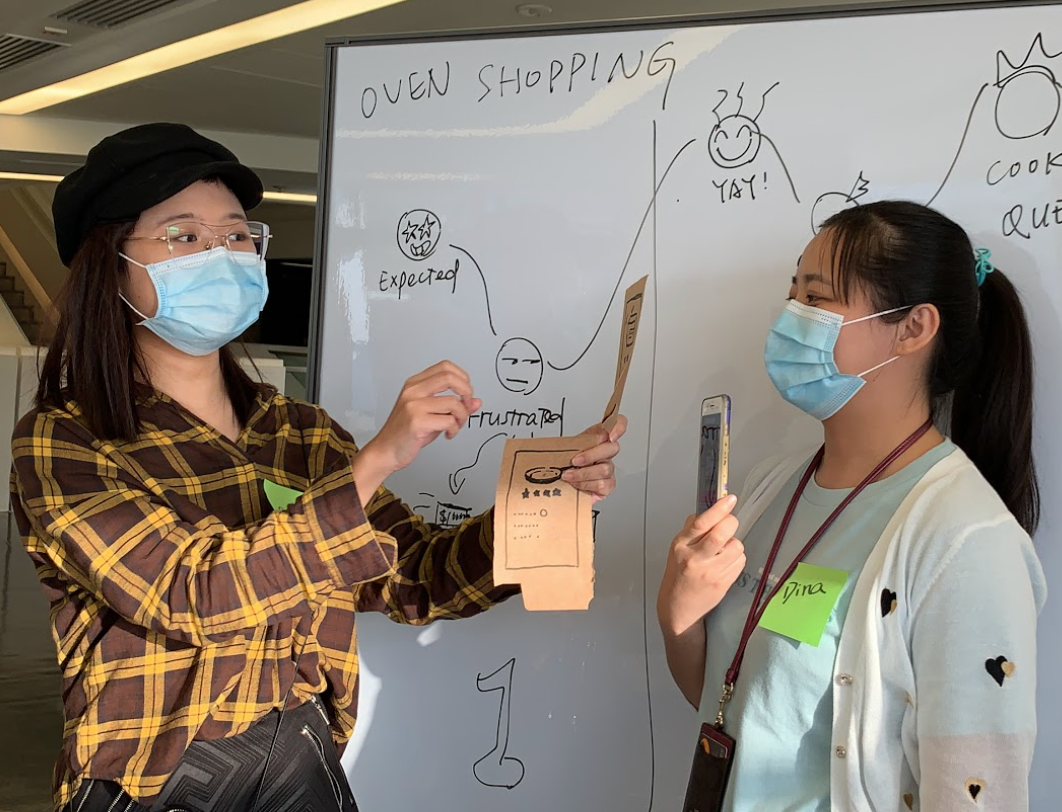
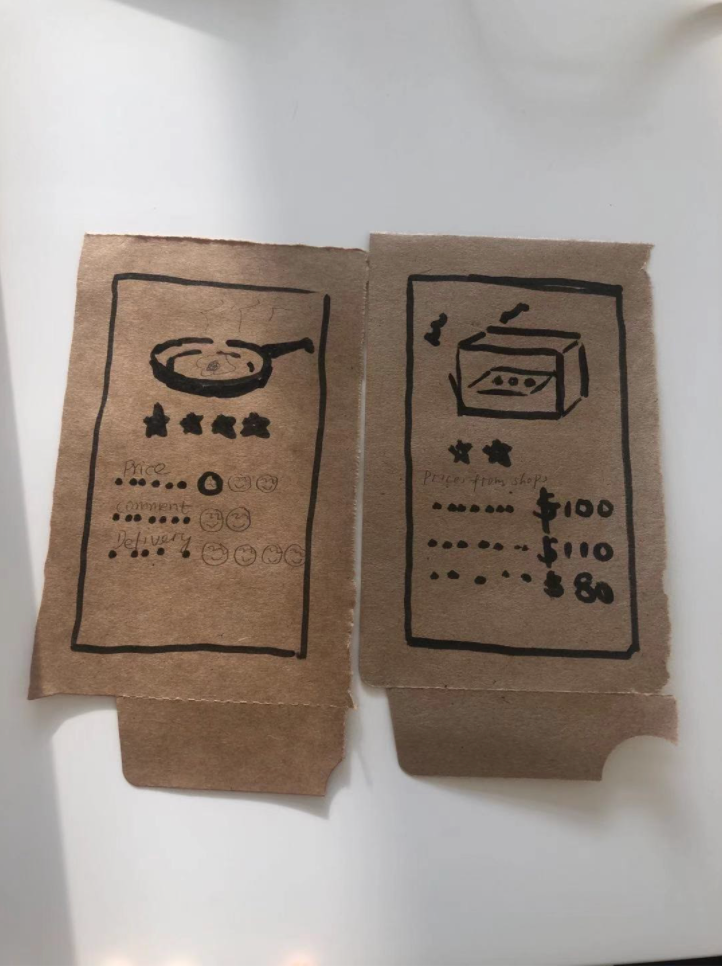
Participants’ works #1 - Scan Device in shopping: One group created a device helping them select ovens. People use this device to scan the oven, then it displays related information, including how it works, prices, rating and comments on various Apps and stores, and relevant products recommendations.
Participants’ works #2 - A Digital Component on Legging: Another group made a digital gadget on the leggings. This device could collect data of exercises, including calories burned, exercise time, and place. It has a small screen that displays one type of data, and users could touch it to switch data on display. The emotion of the leggings could be expressed through this device.
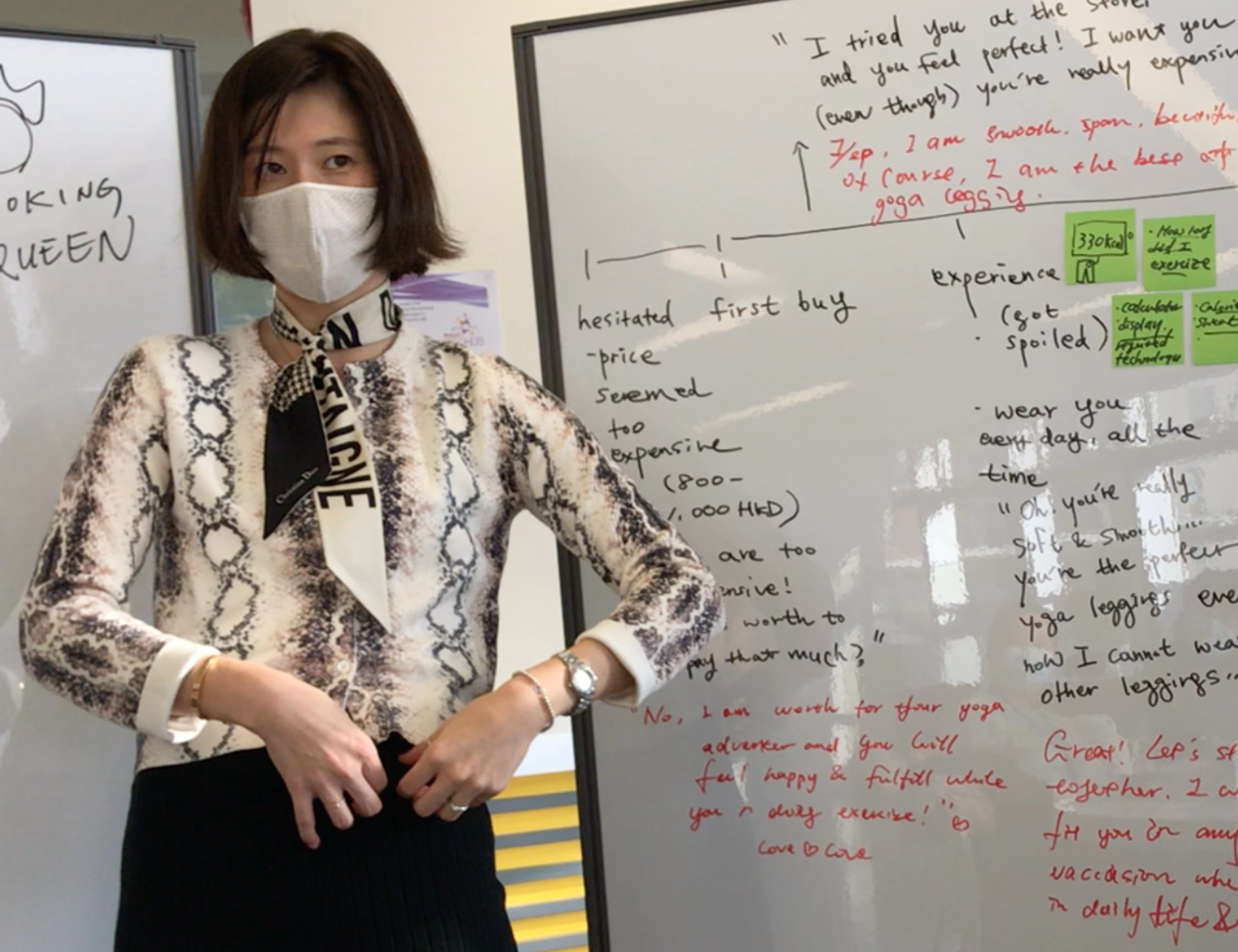
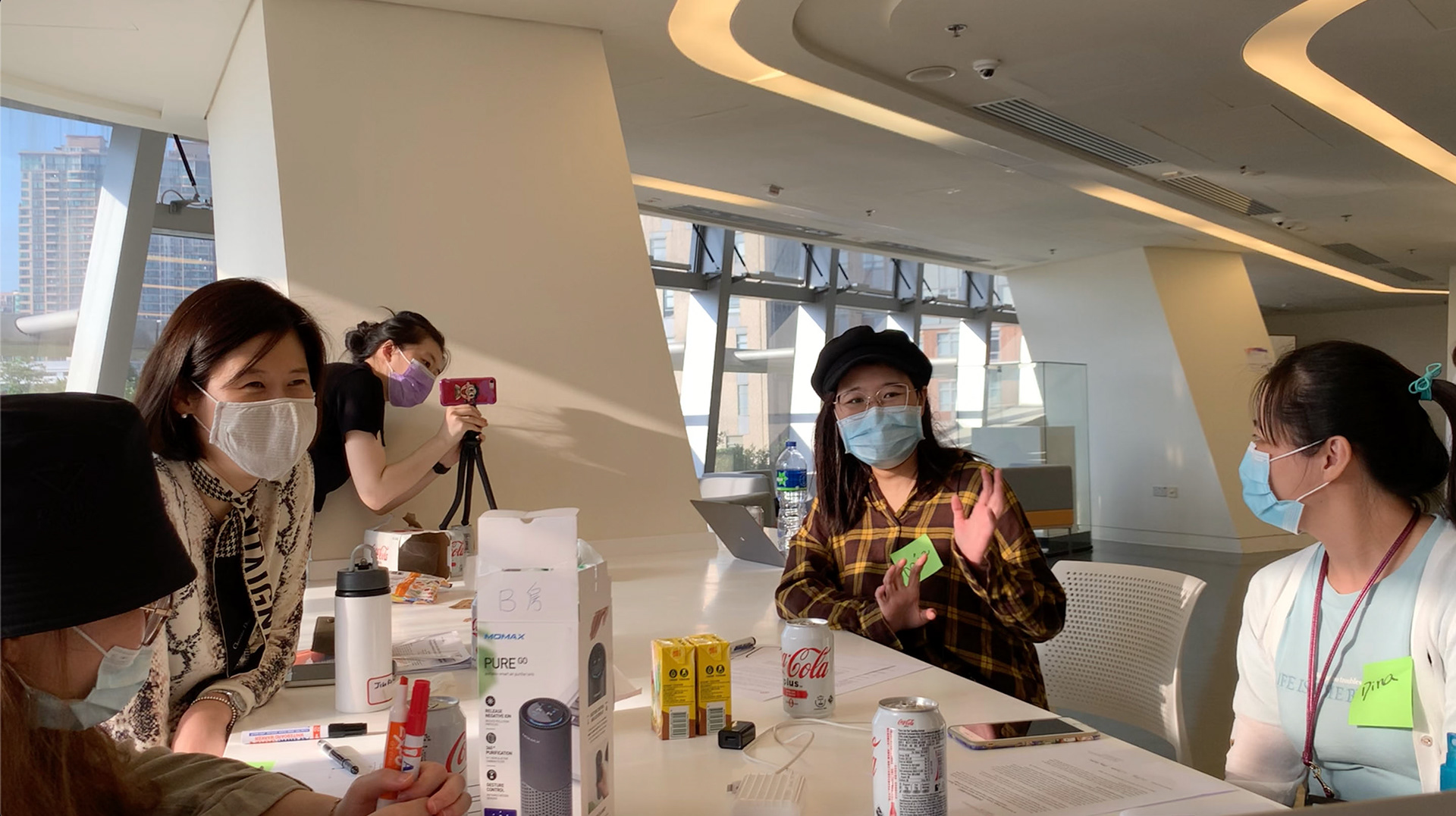
Design Rationale
As the research progressed, we discovered that consumer goods have extrinsic and intrinsic value for people. Extrinsic value depends on other people's evaluation, including appearance, social status, etc., and it's relatively short-term. Intrinsic value is about people's own appreciation of products, including memories, character building, etc. An item's intrinsic value often has a profound and long-term impact on consumers.
We thus refined our topic to urge people to focus on consumer goods' intrinsic value, through which we want to address the issue of people's pursuit of extrinsic value out of vanity and stimulated desires. We need to design a trigger point that uses emotional factors to evoke people’s remembered and nostalgia consumption experiences, thus letting them recall and reflect.
Prototype directions
Prototyping
Initial Attempts
After designing the plot-driven scenarios, we had two initial ideas: 'Letter for You' and 'Luxury Store', based on which we developed rough prototypes.
Initial Prototype #1 - Letter for You
'Letter for You' is a customized usage report triggered by the AR scan, combined with the object personification. When users scan their belongings, the item will become a personified character, which has expressions and speaks to the user. The letter's content is generated through recorded personal informatics and daily usage data by multiple sensors and expressed in emotional narrative and interactions like an old friend reminiscing with the user, thus recalling the user's memories related to the object.
Initial Prototype #2 - "Luxury" Store
'Luxury Store' is a physical interactive exhibition that looks like a luxury store on the outside. The exhibits are ordinary second-hand objects rather than high-priced luxury consumer goods. Visitors will see different consumer goods categories in the exhibition hall, such as bags, watches, shoes, etc. When visitors touch the exhibits, there will be stories related to different objects in this category. Visitors can choose to read some past stories, through which we aim to let the audience realize that the value depends on emotional and memorable experiences.
Cognitive Walkthrough and Iteration
After the initial round of usability testing and cognitive walkthrough in terms of the above two directions, we iterated the idea and made final deliverables.
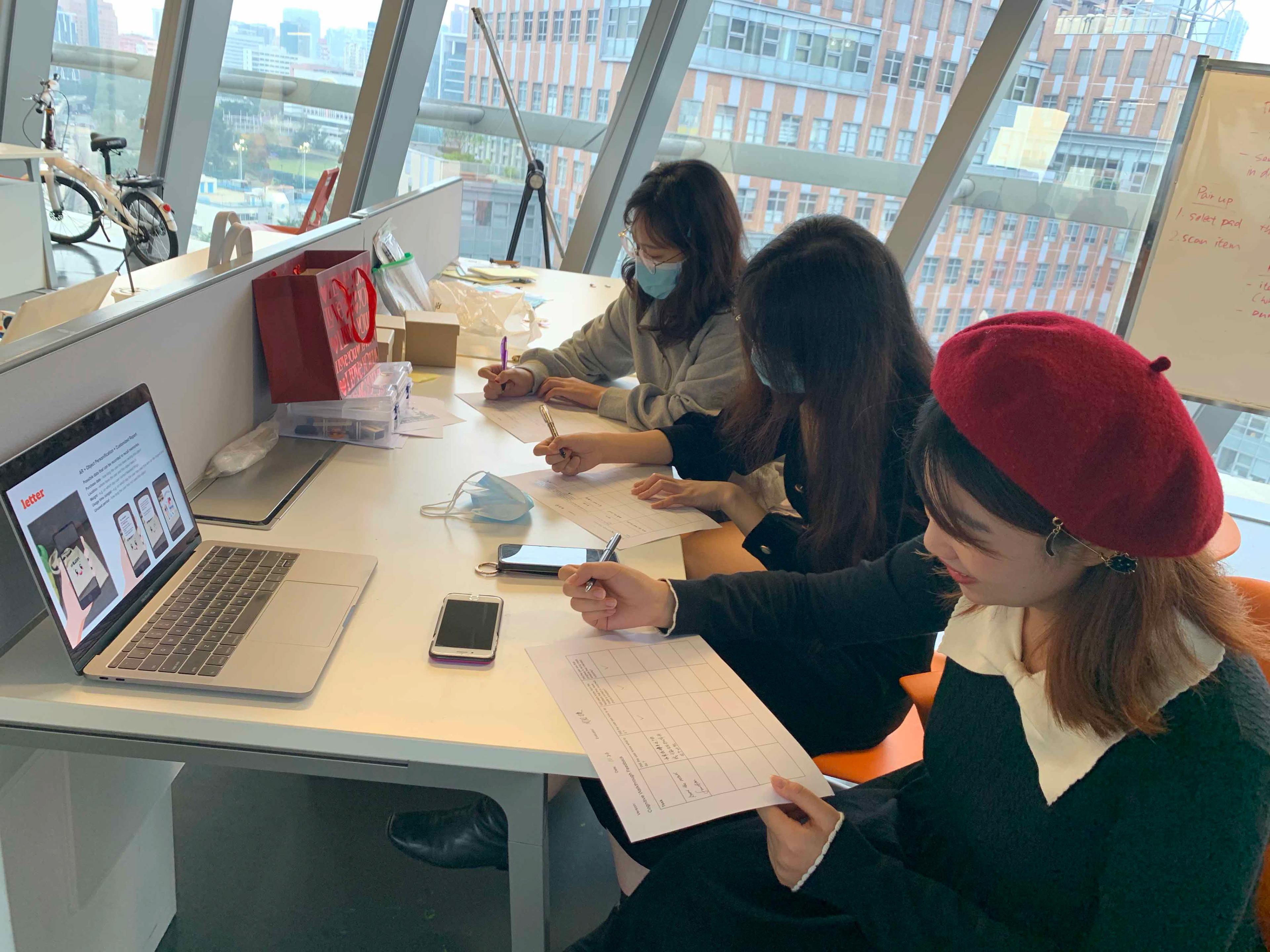
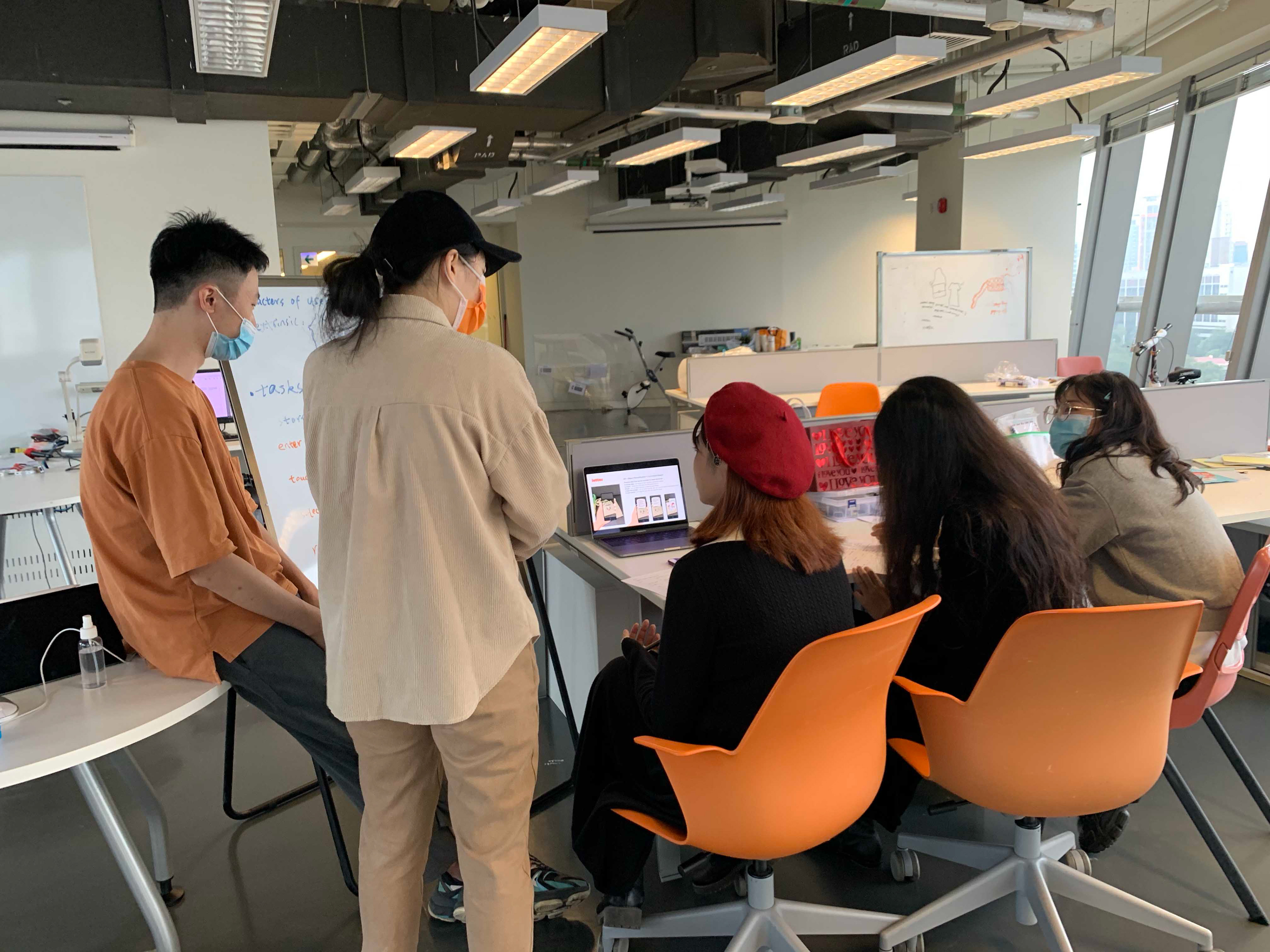
Cognitive walkthrough and tests of initial prototypes
Our refined prototype is a combination of improvements in both directions. To be specific, it is an interactive exhibition named 'The Vintage Luxury' where exhibits are full of stories. The final deliverables contain a simulated setting for real experience testing and a mini-model to show the layout.
After visitors enter the exhibition, they will start with the preface, then notice many ordinary second-hand exhibits in different categories, like bags, watches, shoes, etc. They can touch the price tag on exhibits, which will trigger the interfaces on the screen beside the product. Visitors can read various experiences behind each object and participate in the auction, guessing the exhibit's price and comparing it with the price in its owner's and other visitors' minds. Finally, visitors can have a souvenir to accumulate stories and emotions with their belongings and focus on the intrinsic value in daily interactions.
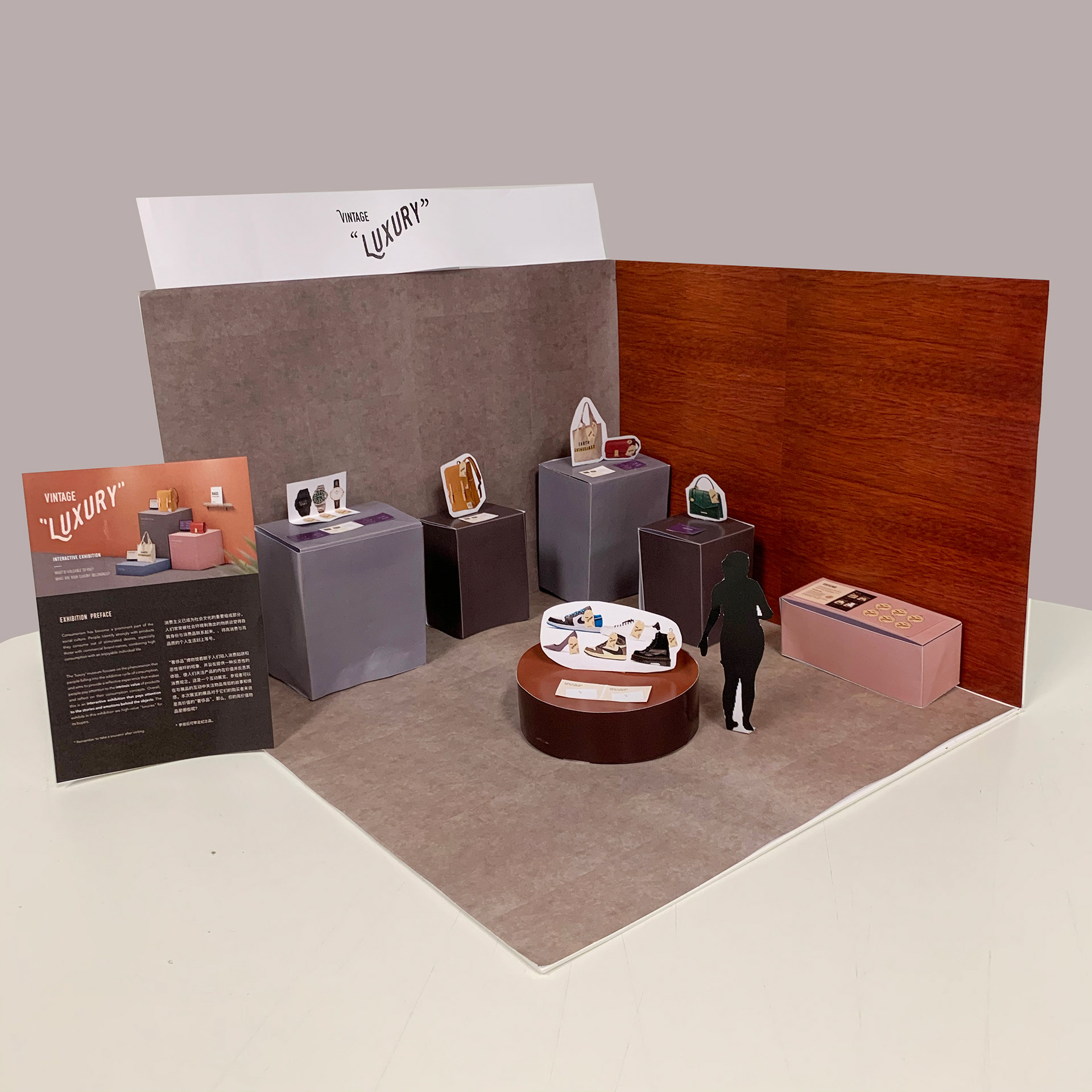
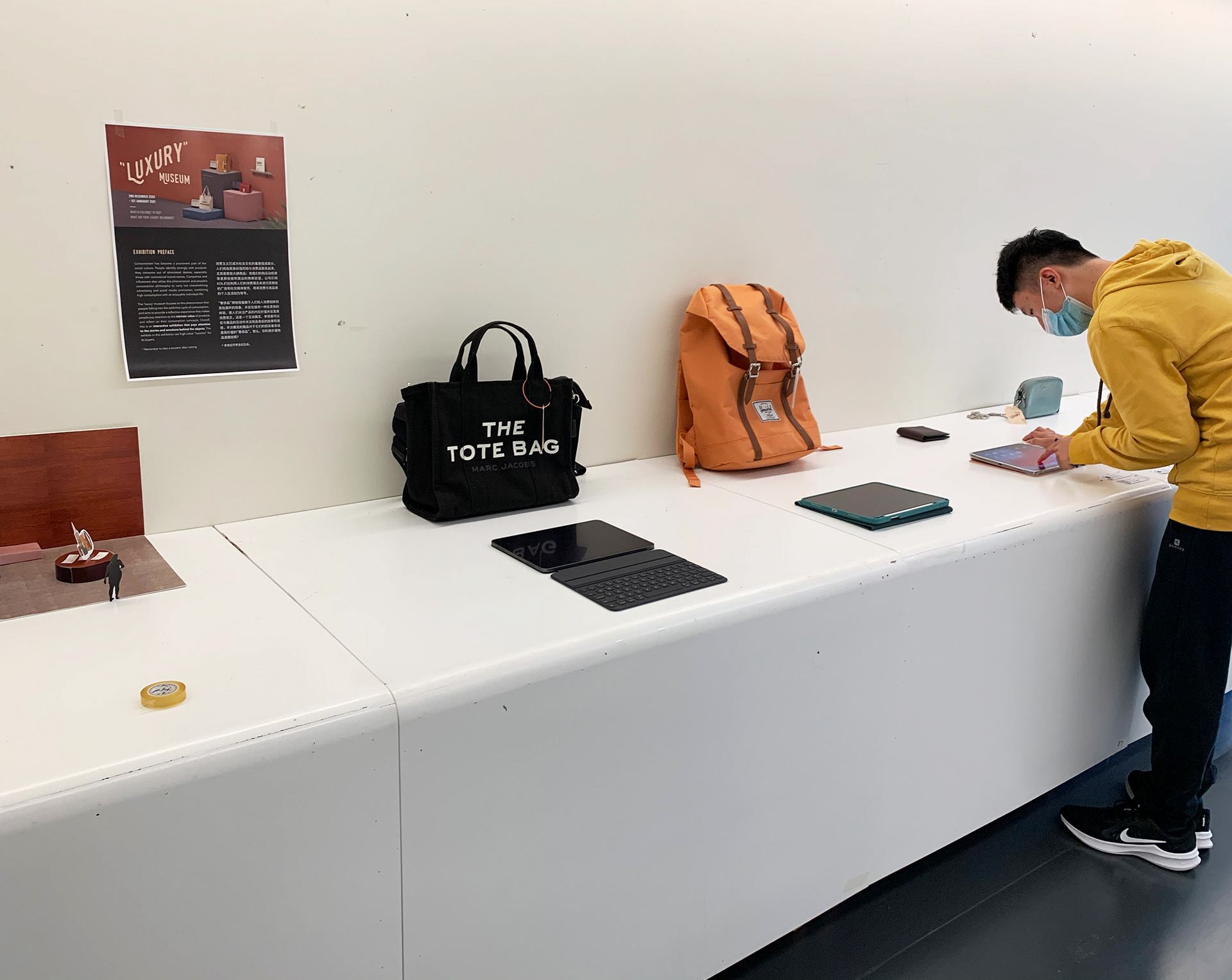
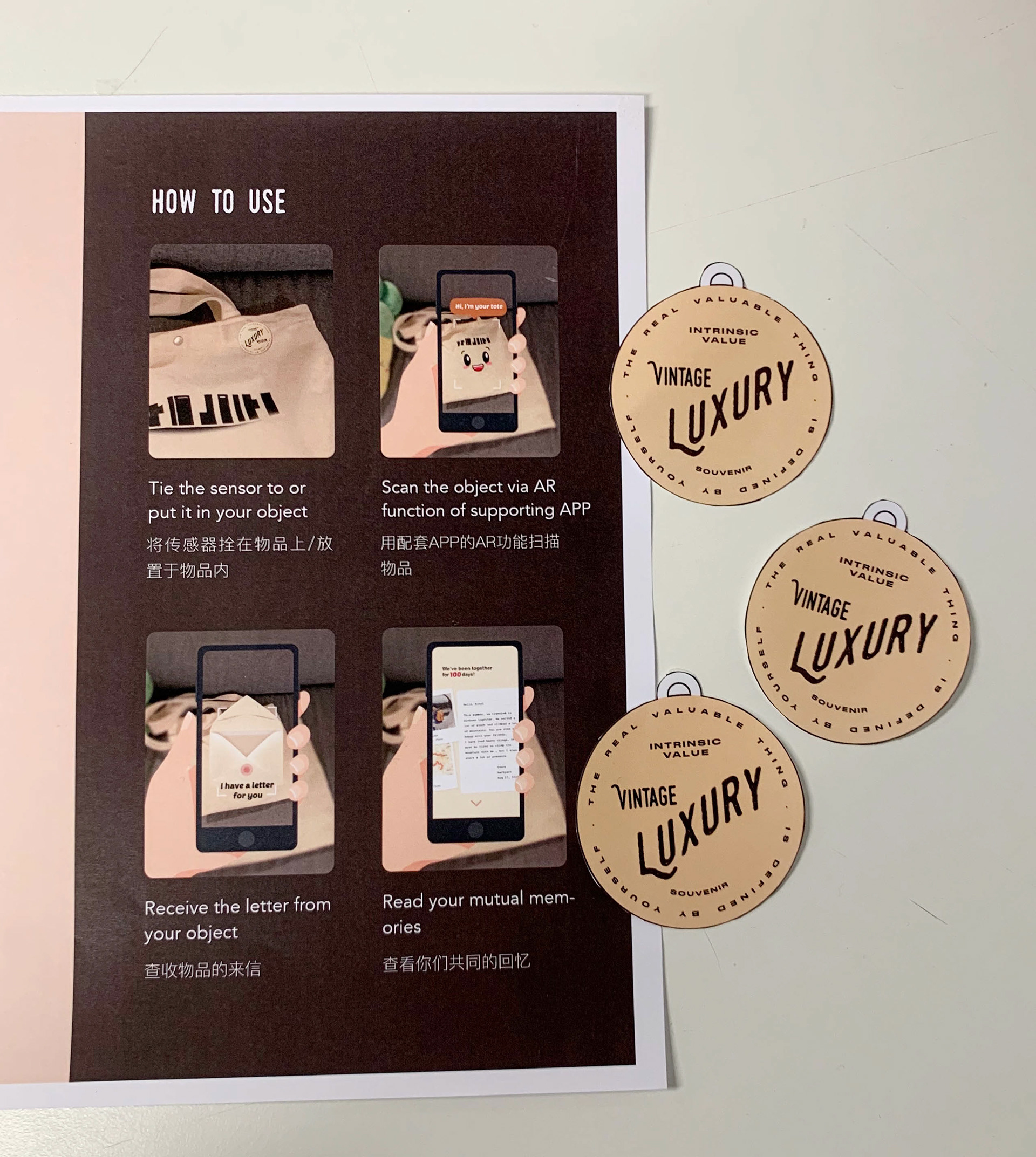
The prototype of the exhibition setting and the souvenir sensor
The souvenir integrates multiple sensors to collect various data, including time, location, pressure, etc. Some data can be collected through other methods. For example, to get the object's photos that appeared, users can take photos about the object then upload them to the platform so that AI could recognize the object in users' following photos. Besides, people appearing in photos with the object also can be recognized. After data collection, "object" behaviors and status could be estimated by synthesizing these data.
